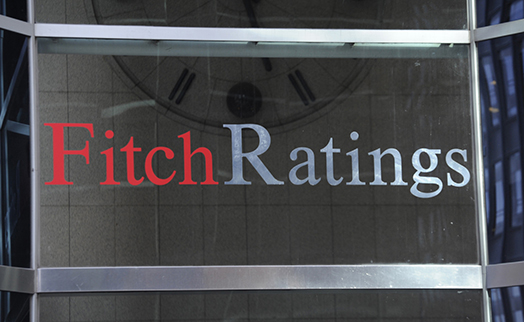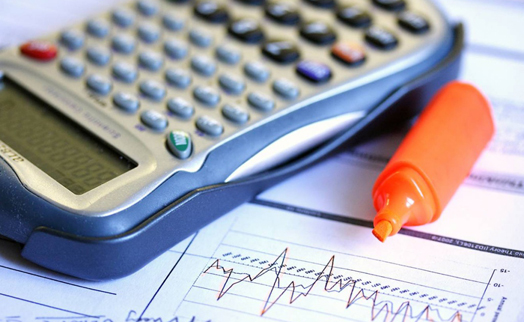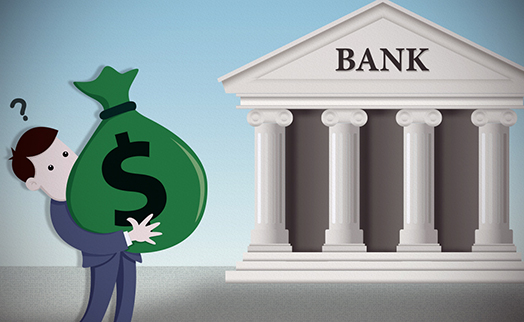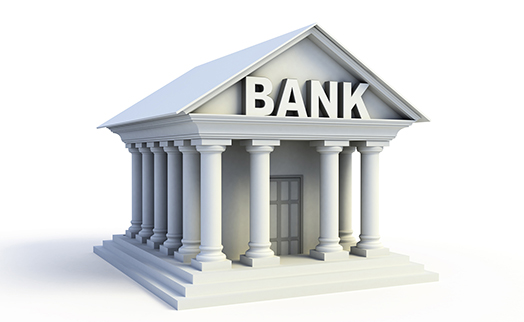13.01.2021 13:03
YEREVAN, January 13, /ARKA/. RAEX-Europe confirmed the sovereign government credit rating (SGC) of Armenia at ‘BB-’ (sufficient level of creditworthiness of the government) in national currency and at ‘BB-’ (sufficient level of creditworthiness of the government) in foreign currency. The rating outlook changed from stable to negative, which means that in the mid-term perspective there is a high probability of downgrading the rating score, RAEX-Europe said in a report.
According to it, the change of the rating outlook for Armenia from stable to negative reflects a higher than expected increase in the budget deficit and in debt levels by the end of 2020, together with the anticipated contraction of the economy due to the COVID-19 outbreak, as well as worsened forecasts for 2021.
Moreover, the high unemployment rate, the still latent rise of a further escalation of the military conflict in the Nagorno-Karabakh region and the deteriorated external position, further hamper the creditworthiness of the sovereign.
However, the agency anticipates the Central Bank of Armenia (CBA) to continue to maintain an adequate expansionary monetary policy. In addition, the inflation rate remains low and has risen only slightly closer to the end of the year whereas the banking system demonstrates a stable stance.
The contraction of the Armenian economy due to the COVID-19 pandemic is higher than expected. As of 3Q 2020, the real GDP plummeted by 6, 6% y-o-y and the agency estimates the overall contraction of the economy to have been around 7, 3% by the end of 2020.
The sharp contraction is mainly due to a fall in consumer demand, drop of remittances inflows and a significant slowdown of business activity in such industries as tourism, transportation, retail trade and entertainment. Additionally, the monthly indicator of economic activity in October 2020 demonstrated a decline of 8,1% as compared to October 2019.
On a positive note, this reading is lower than the May 2020 figure of 12,8% and reflects the easing of the government lockdown measures. In September 2020, the Armenian government reopened the airspace, lifted the state of emergency, and imposed a quarantine regime (prohibition of large gatherings, fines for not wearing a mask in public) until 11 January 2021. As of October 2020, the fiscal response to the COVID-19 outbreak included 24 support packages aimed at subsidizing loans for affected businesses and SMEs, direct money transfers to firms and grants to vulnerable individuals. The overall amount of aid funds allocated as of the end of October 2020, together with bank supports, equals AMD 192,3 bn (USD 367 m) and may reach AMD 230 bn (2,3% of GDP) for 2020. Indirect support in the form of tax deductions adds another 1,4% of GDP.
However, these measures have not been enough to halt the pandemic related shock on the economy and the negative impact on the unemployment rate, which is expected to have risen to 24,1% in 2020. We expect this metric to remain relatively high until at least 2022. In addition, the economic competitiveness and institutional development indicators in Armenia remain subdued. Another downside risk affecting the rating is the probability of further escalation of the military conflict in the Nagorno-Karabakh region and its negative effect on the Armenian economy.
The most violent armed conflict between Armenia and Azerbaijan since 1994 broke out in September 2020 (death toll of more than 2 500 Armenian people, according to the authorities), which coincided with the peak of the second wave of the pandemic causing a double negative effect on the sovereign. The conflict deescalated only after three failed attempts by signing a trilateral Armenia Azerbaijan-Russia ceasefire agreement on 10 November 2020. Taking into account all the above-mentioned factors, we expect the real GDP output to turn positive not earlier than by the end of 2021 (in the range between 0,5% and 1,5%) and start approaching its pre-crisis level not earlier than in 2022.
Sharp increase in the fiscal deficit and debt load by the end of 2020. The implementation of the fiscal stimulus in 2020 as a response to the COVID-19 outbreak, as well as additional security spending led to a significant increase in government expenditures, as these rose by 6,6 p.p. y-o-y as of the end of 2020, from 24,8% to 31,4% of GDP. Moreover, in the first 9M 2020, the deficit amounted to AMD 155 bn whereas during the same period of the previous year it posted a surplus of around AMD 95 bn.
Taking into account the strong negative trend in GDP dynamics, the fiscal deficit is expected to widen to 7% of GDP this year and then to decrease slightly down to 5,6% of GDP in 2021. Under these conditions the levels of both public and publically guaranteed debt and central government debt are expected to increase drastically by 12,8 p.p. (to 66,3% of GDP) and 13,2 p.p. (to 63,1% of GDP), respectively. The agency expects government debt to grow up to 259% of budget revenues in 2020 and approach its peak of 294% in 2021.
'We consider these dynamics, combined with the uncertainty of the further developments around COVID-19 outbreak, a strong factor restricting the credit rating. Nonetheless, the quality of the fiscal policy is estimated as adequate and transparent. The implementation of the long-term fiscal consolidation program in the future and gradual recovery from the crisis would positively affect our assessment. The CBA will continue to maintain an expansionary monetary policy,' the report says.
The inflation rate in Armenia is low but is has slightly risen closer to the end of the year. According to the forecast, the CPI increased by around 1,5% as of the end of 2020, 0,8 p.p. higher than by the end of 2019. The metric is expected to keep growing in the next quarters.
Nevertheless, partially because of the weaker consumer demand, the inflationary environment is running below the CBA target of 4% that remained unchanged. Due to the acceleration of inflation expectations coupled with the depreciation of AMD and the increase in the country’s risk premium, the CBA raised the refinancing rate in the 4Q 2020 by 1p.p.
By doing so, the CBA still plans to keep the expansionary monetary policy stance while being ready to stabilize the inflation near the target in the medium term. We assess the quality of the monetary policy as positive; however, the level of financial dollarization in Armenia remains elevated: as of November 2020, FX deposits constituted 42,8% of total deposits and FX loans – 49,2% of total loans. The banking sector may show signs of weakening in the future.
The financial soundness indicators of the banking sector have remained generally stable throughout the year. As of the end of 3Q 2020, ROA was 1,63%, slightly above the analogous figure of 2019 (1,59%). NPLs to total loans ratio demonstrated a minor increase to 6,0%, whereas a capital adequacy ratio declined by about 0,5p.p. from the beginning of 2020 to the end of 3Q 2020 to 17%.
Due to the stable demand for mortgages and demand from construction sector, credit to the economy expanded by 12% in October y-o-y. Capital buffers of the banks showed a slight decrease since December 2019. Despite currently not demonstrating any signs of deterioration, we anticipate the banking sector to weaken in the future since all effects of the pandemic as well as of the military conflict on it will be visible with a delay. Moreover, concentration of the banking system on the three largest banks (Ameriabank, Armbusinessbank and Ardshinbank) remains high and exceeds 42% of total assets.
External position worsened during the year. A significant drop in the economic activity and consumer demand caused by pandemic in 2020 led to a sharp contraction of both imports and exports. The decrease of import as % of GDP is expected to be higher (around 12,2 p.p.) than decrease of export (around 11,6 p.p.).
At the same time, Armenia experienced weakened FDI, remittances and tourism receipts that is why the current account deficit is forecast to narrow down by 1,2 p.p. We expect the foreign trade indicators to slowly recover starting from 2021 and to approach prepandemic levels in 2022. In 2020, the foreign exchange reserves are expected to decline to USD 2,28 bn from USD 2,85 bn a year earlier which is equal to 5,2 month of imports. Moreover, in November 2020 the AMD depreciated by more than 5% against USD (y-o-y). This factor coupled with a high reliance on the weakening remittances and FDI, restricts our rating assessment.
Financial dollarization remains high; loans and deposits in FX were equivalent to 49,2% and 42,8% of total loans and deposits respectively as of November 2020 (weak stress-factor); The escalation of the conflict with Azerbaijan for the Nagorno-Karabakh this year and the probability of its further development are another downside risks affecting the rating.
The following developments could lead to an upgrade: Faster and stronger than expected recovery of the global economy, as well as the main trade partners, including Russia, which can lead to an improvement of the external position of Armenia and a faster recovery from the current crisis; Substantial decrease of the public debt and deficit metrics on a recovery phase of the economic cycle; Consistent reduction in the dependence on external factors combined with a steep decrease in levels of financial dollarization.
The following developments could lead to a downgrade: Continued lock-down measures in the country and longer period of turbulence in the global economy, including the second wave of COVID-19 pandemic, which would lead to a further deterioration of the external position, as well as a deeper contraction of local economy;
Higher than expected increase of the government debt and deficit metrics due to the need of additional financing for the government expenses, and underperforming of tax and external revenues; Substantial deterioration of the stance of the banking system with sharp growth of NPLs levels, a drop of profitability and capitalization metrics, combined with a lack of liquidity in the system.
In January 2020, RAEX-Europe confirmed Armenia's sovereign credit rating at 'BB-' with a positive outlook. On October 6, 2020, Fitch Ratings downgraded Armenia's long-term issuer default rating (IDR) in foreign currency from BB- to B +. The forecast is “Stable.”
Rating-Agentur Expert RA GmbH (RAEX-Europe) is an independent European Credit Rating Agency, affiliated with the international group RAEX, which has more than 20 years of experience in rating and analytical industry. The Agency is registered by ESMA (European Securities and Markets Authority) and received ECAI status (External Credit Assessment Institution) in 2015. The head office of the Agency is located in Frankfurt am Main.
RAEX-Europe assigns classic credit ratings according to the international scale as well as non-credit ESG ratings (environmental, social & governance). The Agency also issues the ESG rankings, Green Bond Second Opinions, as well as organizes business events and meetings.
In December 2018 together with the leading Chinese rating agency CCXI, the Pakistani VIS Group and the Islamic rating agency IIRA, RAEX-Europe signed a memorandum dedicated to the preparation and publication of analytical products for the Silk Road countries. -0-
Read the news first and discuss them in our Telegram
Tags:




























